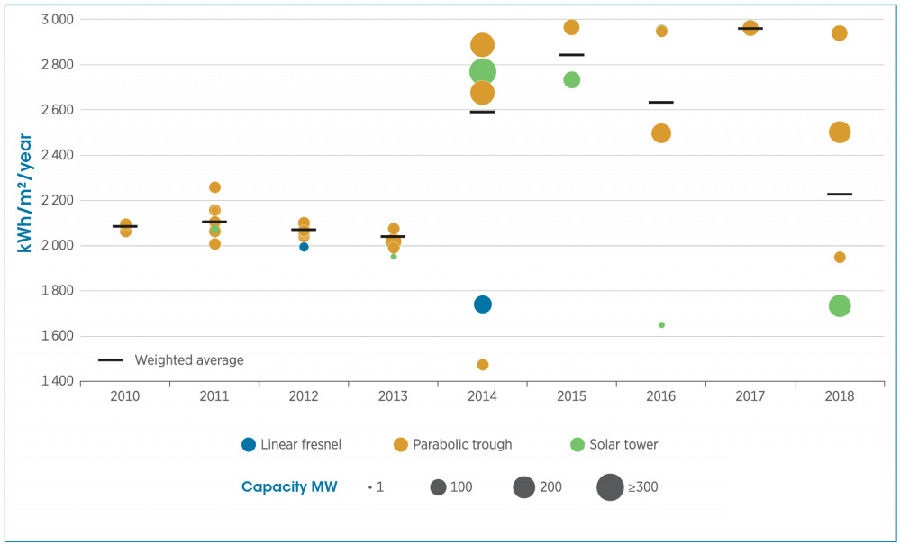CSP costs have already plummeted by 47% compared to 2010. It is likely that costs will continue their downward trajectory thanks to economies of scale, deployment in locations with better solar resources and lower costs of capital, according to a study by the International Renewable Energy Agency (IRENA)
The International Renewable Energy Agency (IRENA) conducted a study on the evolution of the levelized cost of energy (LCOE) of renewable energy technologies, including photovoltaics, concentrating solar power (CSP), and onshore and offshore wind. Whilst all these technologies have undergone steep cost reductions, what is remarkable about CSP is that its LCOE has decreased by 47% since 2010 even though total capacity deployed amounts to 5 gigawatts (GW) only.
“Cost reductions of this kind are exceptionally rare. The only other manufactured product that has had similar cost deflation are computers. But there is still work to be done”, says Michael Taylor, Senior Analyst at IRENA.
Concentrating Solar Power remains more expensive than fossil fuel alternatives in most locations. This might be about to change thanks to a combination of factors.
Higher Solar Resources plus CSP with Thermal Energy Storage: A Winning Combination
A shift to locations with better solar resources has been one of the major drivers of CSP cost reductions. Since 2012, CSP developers have built plants in locations with much higher levels of direct normal solar irradiation (DNI). Other things being equal, a higher DNI yields a lower levelized cost of energy from CSP.

Direct normal irradiation levels for CSP projects by year of commissioning and technology, 2010 – 2018 (Source: IRENA)
The generalized adoption of thermal energy storage (TES) has also played a part in reducing CSP’s levelized cost of energy. CSP with TES can operate for longer, leading to a higher capacity factor. Additionally, the ability to store energy as heat that can be quickly deployed to produce electricity makes CSP with TES fully dispatchable. This a quality that few renewable energy technologies have, and it is essential to provide renewable power precisely when it is demanded.
The power of competitive procurement
Another factor that has had an impact on cost reductions has been the move towards competitive bidding procurement. Initially, countries that wanted to foster the development of CSP plants offered either feed-in-tariffs, as was the case in Spain, or offered tax incentives, which were favored in the USA. Then, competitive bidding processes became the standard procurement method, forcing developers to be more innovative in order to outdo each other.
Whilst the shift towards competitive bidding has favored higher performance at lower prices, these improvements have also been the result of the experience garnered by CSP companies through earlier projects.
“We now have a body of experienced project developers around the world, this has reduced the risk of developing large, complex CSP projects. It’s also pushing down margins and contingencies, it’s helping lower financing costs and, at the same time, having more projects is leading to a larger more competitive supply chain, so component costs are also coming down” says Taylor.
Unsubsidized CSP: Set to beat fossil fuels on price by 2022
It is likely that CSP bids in the range of 5 to 7 cents per kWh would be a common occurrence by 2022, making it cost competitive against fossil fuels in areas with high levels of direct normal irradiation, including most of the Middle East and North Africa.
“Given that we have a technology which can integrate thermal energy storage and provide dispatchable renewable energy, we are very optimistic about the role that CSP will be able to play going forward, particularly in the Sun Belt but also elsewhere with high levels of DNI”, added Taylor.


